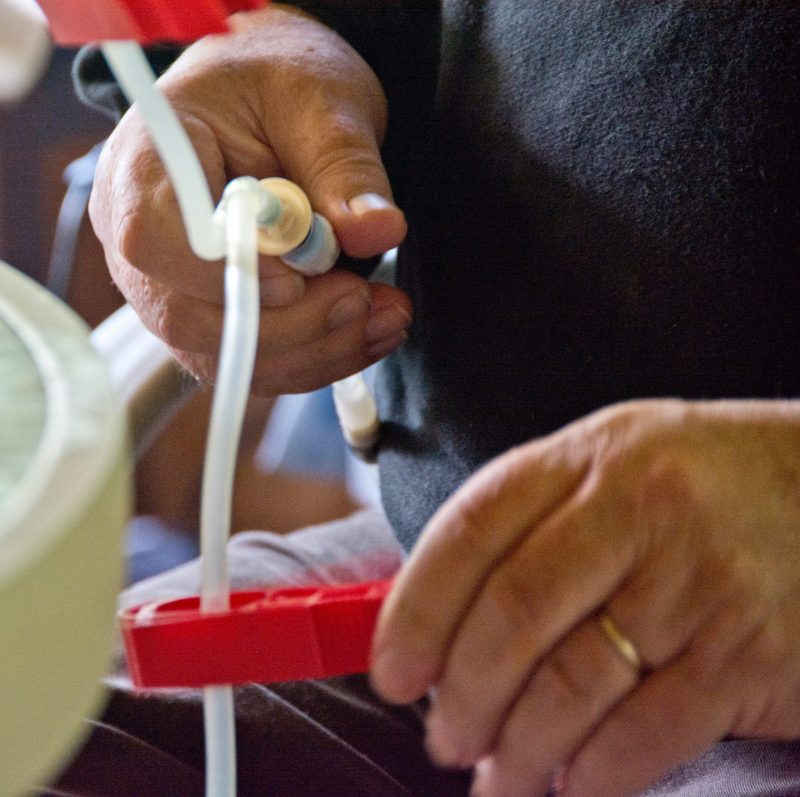What is Dialysis?
When kidneys fail to perform their regular functions of removing toxins, maintaining acid/base and electrolytes, such as potassium, your kidney doctor may start a discussion about dialysis. Dialysis is a procedure that can be done in a few different ways.
Hemodialysis is completed in a facility by filtering the blood directly. Dialysis can also be completed at home using a similar filtering procedure or by using a technique called Peritoneal Dialysis.
What is Peritoneal Dialysis?
Peritoneal Dialysis is a treatment for kidney failure that uses the lining of the belly called the peritoneum. This naturally occurring lining, or membrane, remarkably has the ability to remove toxins, correct potassium levels, remove excess fluid from your body in addition to removing other substances. Thus it works very similarly to a “Third Kidney.”
This treatment is done by the patient in their home after appropriate training. This provides greater flexibility with fewer lifestyle disruptions and reduces the burden of dietary restrictions.
How is Peritoneal Dialysis Performed?
In order to perform peritoneal dialysis, a soft tube (catheter) is placed permanently into the abdomen, in the peritoneal cavity. This procedure is typically performed as a same-day procedure, meaning it does not require admission to the hospital. After the catheter has had two weeks to heal, the training of the patient may begin.
The patient learns to do an “Exchange” in which sterile fluid (Dialysate) is transferred from a bag into the peritoneum via the catheter. Once the bag is empty, the patient can disconnect the tubing and the catheter is capped to prevent the entry of bacteria into the belly. The fluid stays in the abdomen (dwells) for a period of time, typically several hours wherein toxins and excess fluid from the blood filter across into the peritoneal cavity containing the instilled fluid.
During this period the patient can move around and is free to perform their regular activities. The “dirty” fluid is then drained out (Outflow) and the process is repeated as prescribed by the kidney doctor to ensure the treatments are adequately cleaning the blood.
Once the patient completes training they are set up to do the procedure at home. The exchanges can be done manually, as described above, or by a machine while the patient sleeps.
At the Kidney and Hypertension Center, we have extensive experience with all forms of Peritoneal Dialysis.
Contact Us
At The Kidney and Hypertension Center, we provide consultation and ongoing care for the prevention and treatment of kidney-related diseases. Schedule your appointment today.


